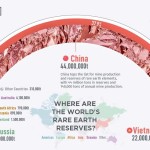Total number of posts 434.
Agricultural products from ASEAN member countries are increasingly gaining acceptance and popularity in the Chinese market, thanks to the positive effects brought about by the Regional Comprehensive Economic Partnership (RCEP) agreement, along with the implementation of a 0% tariff policy applied to many agricultural goods.
ASEAN agricultural goods have been gaining stronger foothold in China, partly due to the benefits brought by RCEP. With many tariffs reduced to 0%, the agreement has facilitated trade flows, lowered costs, and enhanced the competitiveness of agricultural products within the region.
According to data from China Customs, in the first quarter of 2025, agricultural imports from ASEAN increased by 13.8% year-on-year, while exports of agricultural goods to ASEAN rose slightly by 1.4%. This growth reflects the effectiveness of RCEP tariff preferences in boosting two-way agricultural trade.
In Xiamen City, Fujian Province – which accounts for 70% of China’s bird’s nest imports – hundreds of tons of bird’s nests from Malaysia, Indonesia, and Thailand are processed annually. Mr. Luo Yinging, Director of a bird’s nest import company, shared that the industrial zone here gathers nearly 100 enterprises in the bird’s nest value chain, with a processing capacity of up to 650 tons per year.
According to Xiamen customs officials, under the RCEP, import tariffs on bird’s nests from ASEAN countries have been reduced to zero. This not only cuts costs but also shortens customs clearance time and reduces retail prices for consumers.
Overall, RCEP not only offers tariff advantages but also contributes to reshaping regional agricultural trade flows, enabling consumers to access higher-quality products at more affordable prices.
For Vietnam, China has long been one of its leading trading partners, especially in agricultural exports. Vietnamese agricultural products have become increasingly visible on Chinese store shelves, with key exports including rice, coffee, seafood, vegetables, and fruits. According to the latest figures from the General Department of Customs (Ministry of Finance), in the first five months of 2025, Vietnam’s agricultural exports to China reached USD 4.1 billion, up about 12% from the same period in 2024. This positive signal indicates robust Chinese demand for Vietnamese agricultural goods, particularly fruits, seafood, and rice. The results also partially reflect the positive impact of RCEP, as tariff preferences and simplified procedures are creating more room for Vietnamese agricultural products to penetrate deeper into the Chinese market.
Source: Compiled by the Multilateral Trade Policy Department, Ministry of Industry and Trade of Viet Nam














